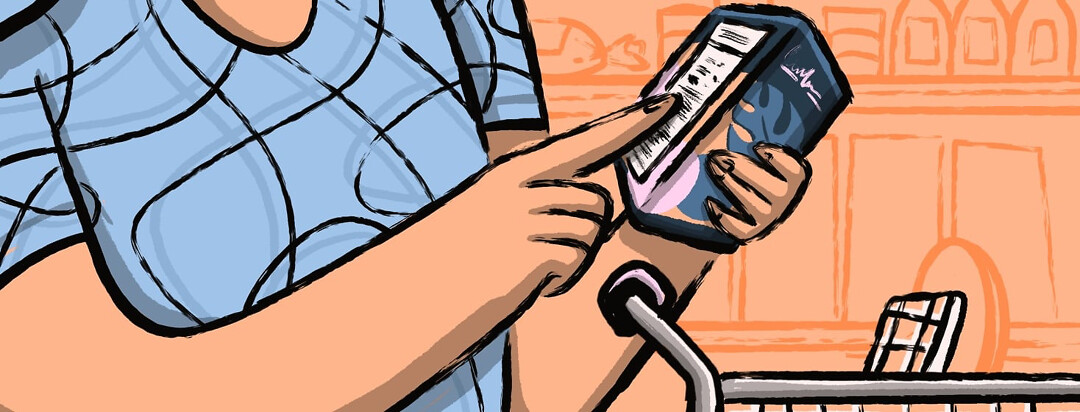What Do Food Labels Mean?
A food label can tell you a lot about what you are eating. It shows the number of calories and serving sizes of different foods and provides a breakdown of different nutrients. If a skin condition like atopic dermatitis (eczema) makes you sensitive to certain ingredients, a food label is also a valuable resource.
Here is a look at a few foods that can set off flares and what to look out for when reading labels.
Sugar
Research shows sugar may be one of the most common triggers of a skin disease flares.1
In food processing, “added” sugar is sugar that does not occur naturally in the raw ingredients of a food. Natural sugars exist in foods like fruit and milk before they are processed. Natural sugars can be found even in things that don’t taste sweet. For example, bread has natural sugars that come from wheat, and cheese has natural sugars that come from milk.
Laws in the United States require food labels to show “total sugars” and “added sugars.” The Food and Drug Administration (FDA) suggests sticking to around 50 grams of added sugar per day for a 2,000 calorie diet.2
If you are sensitive to sugar, cut back on foods with these sugars as the top 3 ingredients on the label:3
- Honey
- Molasses
- Corn syrup
- Corn sugar
- Fructose
- High-fructose corn syrup
- Agave nectar
- Brown sugar
- Cane sugar
- Corn sweetener
- Dextrose
- Maltose
- Fruit juice concentrate
- Glucose
"Sugar-free" or "unsweetened"
Some food labels also advertise they are “sugar-free” or “unsweetened.” So what is the difference?4,3
- Sugar-free: The product has less than a half-gram of sugar per serving. This includes natural sugars like fruit and milk sugars.
- Unsweetened: The product has no added sugars or artificial sweeteners. But, it may still have natural sugars.
Whether or not you are sensitive to sugar, it is best to limit it in your diet. It is mostly empty calories and raises your blood sugar.
Gluten
Gluten is also a trigger for many people with skin conditions. You will find this protein in food made with grains, including bread, cake, cereal, and pasta.
"Gluten-free"
Starting in 2014, the FDA began requiring food products claiming to be “gluten-free” on their labels to meet certain standards. These foods must not contain:5
- More than 20 parts per million (ppm) of gluten
- Rye, barley, wheat, or crossbreeds of these grains such as triticale
- Unprocessed ingredients from these grains that contain gluten (20 ppm or more)
Food products that follow these requirements can include “gluten-free,” “no gluten,” “free of gluten,” or “without gluten” on their labels. Foods like vegetables, fruit, and eggs are naturally gluten-free but may not be labeled as such.5
Dairy
If dairy products cause a flare-up of your atopic dermatitis, you are likely reacting to a protein called lactose.
You can avoid products with lactose, like milk, cream (whipped and sour), ice cream, yogurt, butter, and some cheeses. You can find products labeled as “lactose-free” at the grocery store. They are nutrient-fortified without lactose. Some manufacturers remove lactose from their dairy products by adding an enzyme called lactase. The lactase breaks down the lactose in milk, yogurt, or other dairy products, and then people who are sensitive to lactose can eat that food without having a reaction.6
"Lactose-free"
The FDA does not define “lactose-free” or “lactose-reduced” but relies on food makers to be truthful and not mislead consumers.7
If a product is labeled with any of these words, then it likely has lactose:7
- Milk
- Cream
- Butter
- Evaporated milk
- Condensed milk
- Dried milk
- Powdered milk
- Milk solids
- Margarine
- Cheese
- Whey
- Curds
"Non-dairy"
Also, beware of food with labels that include “non-dairy,” like the labels on powdered coffee creamers and whipped toppings. They may have an ingredient called sodium caseinate, listed as "caseinate" or "milk derivative." Sodium caseinate may have a small amount of lactose.7

Join the conversation